Instructional Series
Welcome to the English medium literacy instructional series teaching and learning resources for years 1 to 8.

- 2
- 3
- 4
- English
- Social Sciences
- Science
- Health and Physical Education
- The Arts
- Technology
- Mathematics and Statistics
- Learning Languages
- Fiction
- Non-fiction
- None
- Articles
- Stories
- Poems
- Plays
- Comic
Search results
155 items - Showing 121 - 130
-
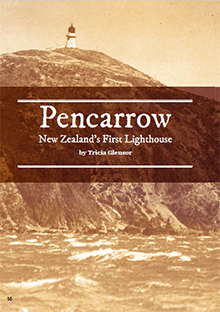
Pencarrow: New Zealand’s First Lighthouse
by Tricia Glensor
New Zealand’s coastline has always been a dangerous place for ships and boats. Early Māori knew that. Several traditional stories tell of waka being washed onto rocks in storms. Since the 1790s, when the first Pākehā reached New Zealand, more than 2,300 ships have been wrecked in New Zealand waters.
-
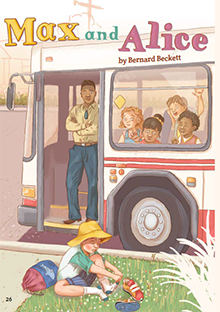
Max and Alice
by Bernard Beckett; illustrations by Sarah Illingworth
On the day of the swimming sports, Max took off his shoes and socks and put them on again three times. Only then was he happy that his socks were lined up exactly the way he liked them.
-
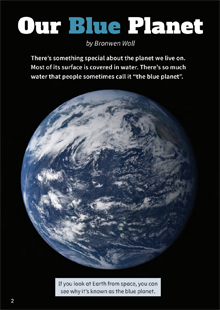
Our Blue Planet
by Bronwen Wall
Water is the basis of life on Earth. It’s everywhere, and it’s familiar to all students. However, many students will not be aware of how water changes form. The text provides an introduction to this aspect of chemistry and introduces aspects of the water cycle, which they will explore further when they are working at level 3 of The New Zealand Curriculum.
-
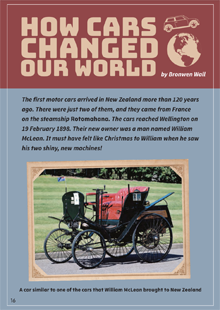
How Cars Changed the World
by Bronwen Wall, illustrations by Scott Pearson
-
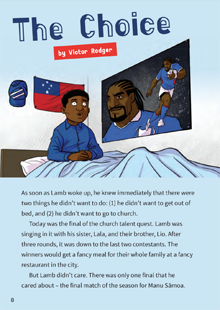
The Choice
by Victor Rodger, illustrations by Michel Mulipola
Lamb’s brother and sister are relying on him to perform with them in the church talent quest. But the only final Lamb cares about is the final match of the season for Manu Sāmoa. Unfortunately, the two events clash. In this humorous story, Lamb learns a lesson about the importance of being responsible and following through on commitments – and being truthful.
-
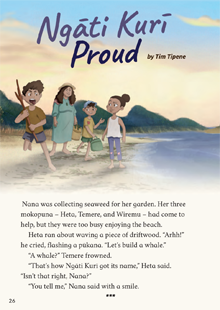
Ngāti Kurī Proud
by Tim Tipene
illustrations by Munro Te Whata
“Ngāti Kurī Proud” is a pakiwaitara – a traditional Māori story that explains natural phenomena or why something is the way it is. This pakiwaitara tells how Ngāti Kurī got their name. It is, in fact, three stories in one – three siblings each retell the story they have been given. Each story reflects the clever thinking, endurance, skills, and resourcefulness of the children’s ancestors. Guided by their grandmother, the children come to learn that all their stories are valid.
-
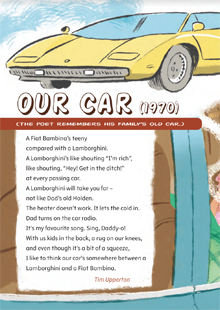
-

Keeping Our Stories Alive
by Lana Lopesi and Grace Teuila Evelyn Iwashita-Taylor
This book explores Samoan tatau in two parts: the first part is an interview with tattooist Tyla Vaeau and the second is a comic that retells how tatau came to Sāmoa. The interview with Tyla explores her Samoan culture, how she became a tufuga tā masini (electric tattoo artist), the process and practice of tattooing, and the significance of being a woman working with tatau. The comic retells the origin story of how tatau – and in particular the malu – came to Sāmoa through Tilafaigā and Taemā. The book links to the article “For the Ancestors”, published in School Journal, Level 3, November 2019, which recounts one woman’s experience of receiving her malu.
Information and tips for using comics in the classroom:
-
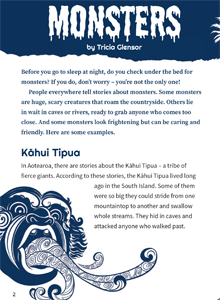
Monsters
by Tricia Glensor, illustrations by Scott Pearson
This article describes a selection of mythical creatures and monsters from around the world, including Kāhui Tipua (Aotearoa), Afinemata/Gāhehelevao (Tokelau), kraken (Norway), oni (Japan), sphinx (Ancient Greece and North Africa), dragons (Asia and Europe), chinthe (Myanmar/Cambodia/Laos), and the bunyip (Australia), and discusses the possible origins of such creatures and some of the reasons for their universal appeal.
-
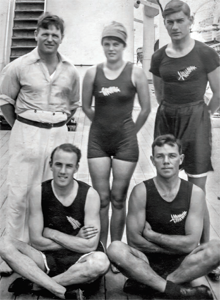
Our First Olympians
by Bill Nagelkerke
“Faster, higher, stronger ...” The Olympic Games have been a source of international interest and entertainment since the late nineteenth century. This article provides information on some of our earliest Olympians, with a particular focus on the four athletes who attended the 1920 Summer Olympics in Antwerp, Belgium. It was the first year that Aotearoa New Zealand had sent an independent national team to the games, and despite facing additional challenges of distance and expense, all four athletes made the finals with one winning a bronze medal. The final paragraph of the article extols the benefits of aiming high and working hard to achieve a goal.


 Literacy Online home
Literacy Online home
